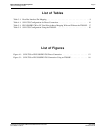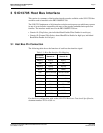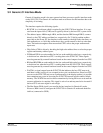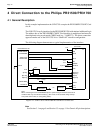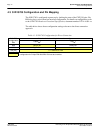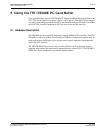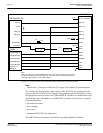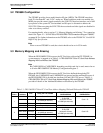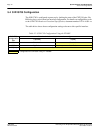
Epson Research and Development Page 13
Vancouver Design Center
Interfacing to the Philips MIPS PR31500/PR31700 Processor S1D13705
Issue Date: 01/02/13 X27A-G-012-02
The “Generic #2” host interface control signals of the S1D13705 are asynchronous with
respect to the S1D13705 bus clock. This gives the system designer full flexibility to choose
the appropriate source (or sources) for CLKI and BCLK. The choice of whether both clocks
should be the same, and whether to use DCLKOUT (divided) as clock source, should be
based on the desired:
• pixel and frame rates.
• power budget.
•part count.
• maximum S1D13705 clock frequencies.
The S1D13705 also has internal clock dividers providing additional flexibility.
4.2 Memory Mapping and Aliasing
The S1D13705 requires an addressing space of 128K bytes. The on-chip display memory
occupies the range 0 through 13FFFh. The registers occupy the range 1FFE0h through
1FFFFh. The PR31500/PR31700 demultiplexed address lines A17 and above are ignored,
thus the S1D13705 is aliased 512 times at 128K byte intervals over the 64M byte PC Card
slot #1 memory space. In this example implementation, the PR31500/PR31700 control
signal /CARDREG is ignored; therefore the S1D13705 also takes up the entire PC Card slot
1 configuration space.
Note
If aliasing is undesirable, additional decoding circuitry must be added.



